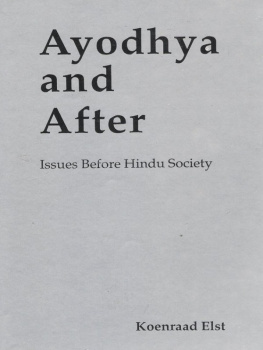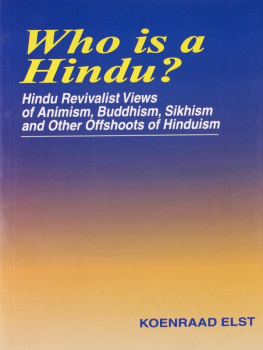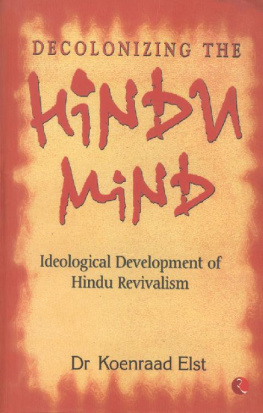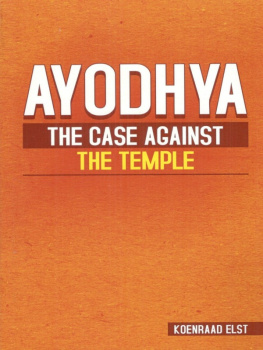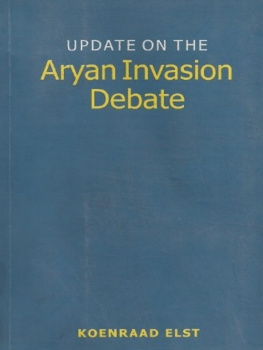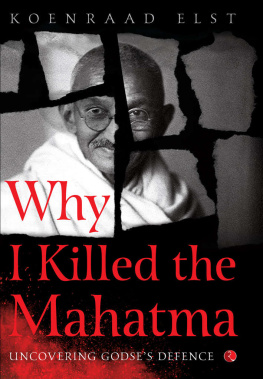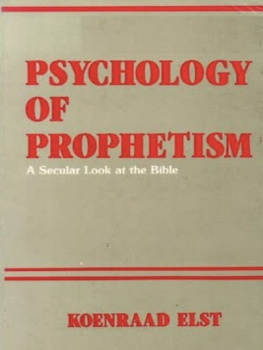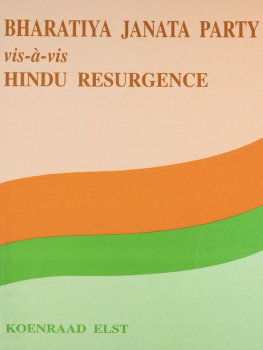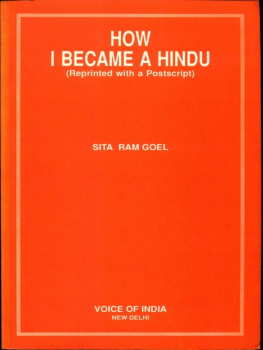Introduction
I am not a Hindu. And I am certainly not a Muslim. So, when I started writing my earlier book Ram Janmabhoomi vs Babri Masjid, a Case Study in Hindu-Muslim Conflict, in the spring of 1990, I was an outsider to this conflict between Hindus and Muslims. But as I ventured deeper into the unique configuration of forces now existing in India, I saw that this was not a conflict between just any two communities. It is not just a struggle between one self-interest and another self-interest. It is a struggle between very unequal contenders, with unequal motives for waging this struggle at all.
On the one hand, there is the society that has continued the age-old civilization of this country. It has been badly bruised by centuries of foreign rule and oppression, with the moral losses more serious than the territorial and cultural ones : it suffers of self- forgetfulness and lack of self-respect. But it is still far better off than most of the cultures that have been overrun by the Muslim conquerors or the European colonizers. It has a real chance of coming through.
On the other hand, there is a community, which is allowed to function within this larger society, but which has the roots of its separate identity outside this society's age-old civilization. These people's ancestors were in may cases pulled out of Hindu society and made members of the Muslim community under duress. Now, they would automatically evolve back into Hindu society, were it not for some politicians and theologians who instill a separate communal identity in them.
The Ayodhya movement, which wants to reintegrate the sacred place of Ram Janmabhoomi into the living Hindu tradition by building a Mandir on it, is at the same time an invitation to the Muslim Indians to reintegrate themselves into the society and the culture from which their ancestors were cut off by fanatical rulers and their thought police, the theologians. It is thus an exercise in national integration.
The struggle of Hindu society is not primarily with the Muslim community. The most important opponents of Hindu society today are not the Islamic communal leaders, but the interiorized colonial rulers of India, the alternated English-educated and mostly Left-leaning elite that noisily advertises its secularism. It is these people who impose anti-Hindu policies on Hindu society, and who keep Hinduism down and prevent it from proudly raising its head after a thousand years of oppression. The worst torment for Hindu society today is not the arrogant and often violent agitation from certain minority groups, nor the handful of privileges which the non-Hindu communities are getting. The worst problem is this mental slavery, this sense of inferiority which Leftist intellectuals, through their power positions in education and the media, and their direct influence on the public and political arena, keep on inflicting on the Hindu mind.
These Leftist intellectuals work in a strange collusion with the Islamic fanatics. Normally, the atheist Left should be the sharpest opponent of religious obscurantism and dogmatic adherence to anti-universalist belief systems like Islam. But in India, the two work happily together for the destruction of their common enemy: Hindu Dharma. Of course, the Leftists are mistaken if they think they can use the Muslims for their own ends. It is a one-way collaboration, and increasingly so, as the Left is put on the defensive while Islam is still on the offensive. So far, the Left has rendered some fine intellectual services to the cause of Islam. It has strongly supported the movement for the Partition of India on the basis of the Islamic Two-Nation Theory. After Partition, it has used its increasing hold on the entire intellectual and educational scene in India to paralyze all criticism of the historical record and ideological character of Islam.
Then again, the impression that this westernized elite is merely being used for Islamic communal designs, may be superficial. This elite itself is quite confident that it is in no way threatened by Islamic self-assertion. And rightfully so : Islam cannot seriously challenge modernity once it has really taken off and shaped the polity (as it has in India, far more than in the Shah's Iran). While Islamic resurgence may pose a physical threat to Hindu society, the deeper challenge and the sharpest disdain are coming from the Left-leaning westernized (short : Nehruvian) establishment.
So, one of the first tasks in the awakening of Hindu society is to scrutinize and expose the Nehruvian establishment, it its political and in, more fundamentally, its intellectual dimensions. Today, that is becoming easy. When in the fifties people like Ram Swarup and Sita Ram Goel were waging an intellectual struggle against Communism, they were up against a dense fog of widespread fascination with this intrusive ideology. But in the nineties the sky is clearing up, and we witness the swan song of the once so arrogant Leftist intellectuals even in their last strongholds. It is a foregone conclusion that their empire is nearing its end, it is just a matter of not letting their exit drag on for longer than necessary, and being prepared to fill the vacuum.
At the intellectual level, Hindus will son be able to breathe freely. They will be able to rediscover and reformulate the numerous valuable expressions of the one Sanatana Dharma. They will be able to affirm the unity and integrity of this Sanatana Dharma, without being falsely accused of assimilative communalism when they restate the scientific fact that Buddhism, Jainism and Sikhism are full members of the one Hindu commonwealth of schools and sects. They will be able to reaffirm the unity and integrity of Hindu society, and to debunk the casteist and regionalist separatisms that have been fostered by its enemies and equipped with a pseudo- historical basis. They will be able to put the evils of Hindu society into the correct historical perspective on the basis of the real facts, and judge them by universal standards rather than by the hostile ad hoc standards that have been applied to Hindu society by its enemies.
Equipped with a renewed self-awareness, Hindus will be able to face the challenge posed by the increasingly militant Muslim world. So far, with the help of the leftists, Islam has been able to impose a kind of Emergency on India. During Indira Gandhi's Emergency rule, everyone was perfectly free to sing the praise of Nehru's daughter, but criticizing her was a dangerous thing to do. All the Indian intellectuals refer with indignation to this episode (during which the Constitution was amended to make India a secular socialist republic). Similarly, it is allowed to eulogize Islam as a religion of peace and brotherhood, but scrutinizing Islamic history and doctrine, or merely asking some critical questions, is quite out of bounds. Books that do these things, have a good change of getting banned, with the tacit or explicit approval of the secularists, and newspaper editors have interiorized this bank on critical writings about Islam. At the intellectual level it is very easy to put Islam on the defensive and cool down its arrogance, just by doing those very things which this Emergency wants to prevent. If Hindus take cognizance of the real texts of Islam, the real doctrines they embody, the real story of the Prophet's mission and career, and the real story of the application of these doctrines in the Islamic conquest of India, then they will soon shed their habit of eulogizing this imperialist ideology. If moreover they apply the precise psychological categories, which Hindu tradition has developed, to understand the quality of consciousness that has generated the central texts and doctrines of Islam, they will soon be cured of their mental subservience to Islam.
It is my conviction that Islam will not last very much longer. In the confrontation with the rational spirit, which was present in Hindu, thought since millennia, but which has been brought centre-stage in modern culture and education by the West, the dogmas of Islam cannot survive. The universalist attitude of science revolts against the belief that one man could get a special message from none less than the Creator of the Universe, while others are excluded from any such direct contact. The critical attitude of science rejects the demand that we accept Mohammed's claim to prophethood without verification. Islam has no satisfying reply to this challenge of science and rationality.

